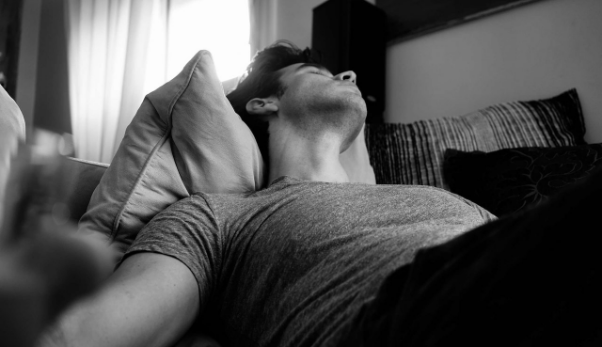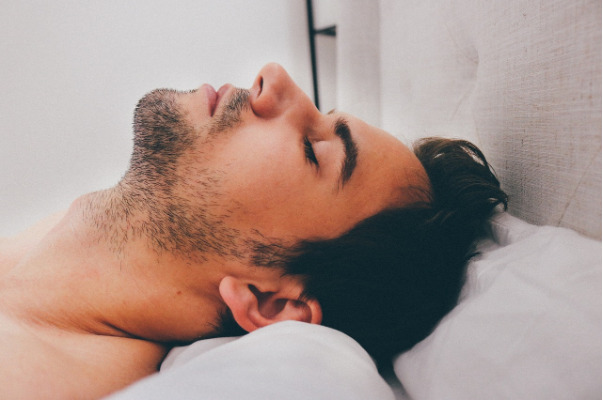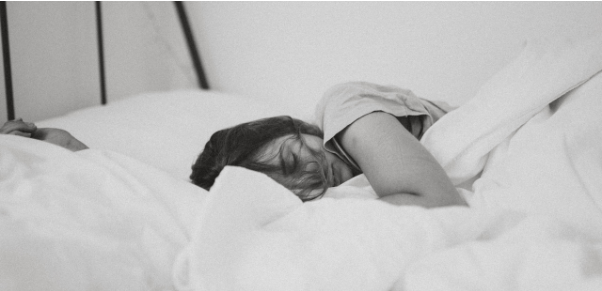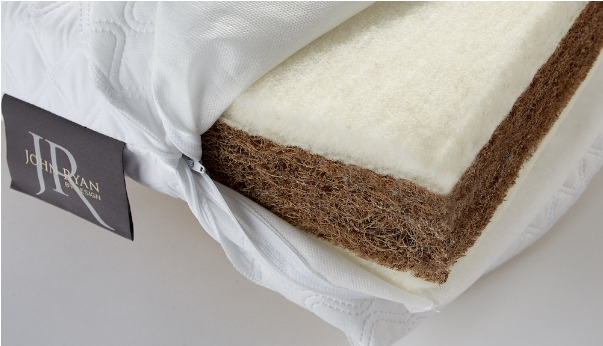Sleep & Well Being
June 2022What is the Best Sleeping Position?
We’re often asked what the “best sleeping position” is. However, in our experience it’s actually more productive to make the best of whatever sleeping position is natural to you. Each position has both benefits and drawbacks, so it’s about minimising the latter to enjoy the former. This article discusses each in turn, so you can better understand just what adjustments might lead you to a better night’s sleep.
Side

Side Sleeping Pros
- Alleviates the symptoms of obstructive sleep apnea and snoring.
- Soothes neck pain and lower back pain.
- Less night time fibromyalgia pain.
- Helps with blood flow (especially important if you’re pregnant).
Side Sleeping Cons
- Sore shoulders.
- Problems with pins and needles sensations (known as “paraesthesia”).
- Excess movement, or excess heat on the sleeping side.
- Side sleepers experience more facial wrinkles. Yikes!
Sleeping on your back is famously the best position for spinal support. However, sleeping on your side is more common, and comes with its own benefits. However, the key to these benefits revolves around which side you prefer to sleep on, and what support you have from your mattress.
The Best Side to Sleep On
The side you sleep on really matters when it comes to your overall health and wellbeing. Ideally, you should always be sleeping on your left side if you’re a side sleeper. Your stomach is naturally positioned on your left side, so sleeping on that side allows it to better digest your food. Sleeping on the left can alleviate acid reflux, lower the risk of heartburn, improve circulation, and even help to drain toxins from your lymph nodes. If you often find yourself sleeping on your right side instead, then try placing a large pillow behind you in bed. This can train your body to stick to the left.

The Best Mattresses for Side Sleepers
If your mattress isn’t really suitable for sleeping on your side, then you can be left with frequent shoulder, neck, and back pain. This is particularly true if you’re using a low-end mattress, as these simply don’t have enough fillings to support side sleepers. This is why it’s essential to know the GSM of your mattress. A high amount of GSM (Grams per square metre) in the fillings will be essential, as these will allow you to be comfortably supported.
With the wrong mattress, you’ll be left with misalignment and spinal curvature when snoozing. This causes you to wake up with pain in your shoulders and hips, or numbness in your legs or arms. A supportive mattress helps to keep your spine aligned, which promotes healing and regenerative sleep processes.
Up to 16 Stone / 50-101kgMedium (1.4mm)
| Bodyweight | Spring Tension |
|---|---|
| 16 Stone / 101kg Upwards | Firm (1.6mm) |
| Available in Bespoke Products (Please Call) | Soft (1.2mm) |
Tips for Mattresses for Side Sleepers
- Choose a mattress with slightly softer (or at least medium feel) top layers. This lets your hips, shoulders and side sink in.
- Avoid mattresses that are too firm, as they can cause pressure point pains. Your hips and shoulders tend to bear the brunt of the pressure when you’re a side sleeper, so your
mattress needs to be gentle on them. - Consider combining your mattress with all-natural comfort layers. This fully supports your body’s temperature regulation and pressure points.
- Choose a mattress that has progressive support, such as a pocket sprung mattress. Support for your curved areas – mainly your neck and waist – is a priority.
- Avoid memory foam. Side sleepers can easily find themselves held restrictively in one spot. Your mattress should conform to you, not the other way around!
Back

Back Sleeping Pros
- Reduced hip/shoulder pain.
- Less joint pain in the lower back.
- Fewer night time movements.
- Reduced sinus build-ups/congestion.
Back Sleeping Cons
- Snoring.
- Breathing difficulties (if the head and neck isn’t supported).
- Sleep apnoea.
- Sore legs from overextension.
Sleeping on your back is the second most popular sleeping position (after sleeping on your side), and it’s long been recommended as an ideal. This is because it equally distributes your body weight along the surface area of your mattress. Sleeping on your back helps reduce pressure in any one spot, which, in turn, can lead to a more consistent night’s sleep, as you need to turn less.

The Best Way to Sleep on Your Back
The biggest issue with sleeping on your back is breathing difficulties and snoring. A sleeper’s airways can become partially obstructed, which can promote snoring or sleep apnoea. Using the right pillow to help keep your head supported is therefore important. Awkward neck angles can also stem from a mattress that’s not supportive enough. A sleeper can all too easily be held in a contorted sleeping position where the neck gets too extended or compressed.
For those who sleep on their back, spine alignment is crucial to getting a great night’s sleep. It’s vital that you don’t disrupt your natural sleeping position. If you wake with sore legs or thighs when sleeping on your back, then there’s actually a quick fix! A pillow underneath your knees at night should reduce any pressure. It will also stop your legs overextending and can relax the calves and thigh muscles.

The Best Mattress for Back Sleepers
As a back sleeper, you will need more support than a side sleeper, and you shouldn’t accept back pain as an inevitability. Back sleepers suit a medium-firm comfort layer in their mattresses, as it gives them even and consistent support during the night. Such a mattress holds you in a comfortable and stable position without letting you sink in too much.
Natural fibre mattresses – like Horsehair, Mohair or Coir – are also ideal for back sleepers. They offer far better supportive comfort than memory foam or synthetic mattress fibres. Natural fibre mattresses also give a cooler night’s sleep, and regulate night time-temperature more effectively.
Tips for Mattresses for Back Sleepers
- If you choose a mattress that’s too soft, it can cause you to sink in too much, which can misalign your spine. A firmer comfort layer evenly spreads your weight across the mattress.
- The right mattress should be tailored to your weight and height.
- A suitable mattress should be layered with upholstery to create the right comfort.
- If you put on weight and suddenly find yourself waking up during the night in pain, your mattress’s pocket spring support may not be correct any more. Mattress spring tensions are based on weight ranges, so if you’ve gained more than a few pounds then you could need a more supportive spring tension.
BodyweightSpring TensionUp to 16 Stone / 50-101kgMedium (1.4mm)
| 16 Stone / 101kg Upwards | Firm (1.6mm) |
| Available in Bespoke Products (Please Call) | Soft (1.2mm) |
Front

Front Sleeping Pros
- Diminishes the effects of sleep apnoea.
- Reduces snoring.
- Less night time movement/fidgeting.
Front Sleeping Cons
- Sore shoulders.
- Neck pain.
- Headaches.
- Chest pains.
Sleeping on your front is the least common position amongst adults, although that’s not to say there’s anything wrong with it. Front sleeping can help you if you suffer from obstructive night time breathing, and reduce disturbances like snoring. This is because front sleepers generally don’t move around as frequently as side sleepers. Whether you like to bury your face in a pillow, or have your head to one side as you starfish, you’re a rarity if you sleep on your front!

The Best Way to Sleep on Your Front
Sleeping on your front can easily cause you to suffer from night time neck and shoulder pains, plus headaches. This is because sleeping on your front puts your body in quite an awkward position. However, this can usually be attributed to a mattress with poor support, incorrect spring tensions or unsuitable comfort layers. As a front sleeper, you’re going to need more support for your shoulders and neck, which means firmer top support layers and upholstery.
The Best Mattress for Front Sleepers
The biggest issue front sleepers have with their mattress is excess pressure being put on the shoulders or neck. This is especially true if the mattress is too soft, which means it will sink far too quickly. This lack of support causes your neck and spine to come out of natural alignment, resulting in an unnatural arch in the lower back. Mattress spring tensions are based on weight ranges. A softer spring gauge may mean that a mattress provides too little support for your sleeping position and bodyweight. Therefore, the correct pocket spring tension is vital.
| Bodyweight | Spring Tension |
|---|---|
| 16 Stone / 101kg Upwards | Firm (1.6mm) |
| Available in Bespoke Products (Please Call) | Soft (1.2mm) |
| Upto 16 Stone / 50-101kg | Medium (1.4mm) |
Tips for Mattresses for Front Sleepers
- The right mattress should be tailored to your exact weight and height.
- Front sleepers will need a firmer, more supportive, mix of mattress upholstery layers when compared to side sleepers. A firmer feel in the mattress comfort layer better supports the neck and shoulders.
- Natural fibre mattresses are ideal, as they offer better progressive comfort than memory foam or synthetic fibres. They’re also cooler to sleep on, and regulate night time-temperature more effectively.

Mattress Fibres for All Positions
Regardless of your sleeping position, side, back or front, understanding which mattress fibres and upholstery layers will best support you is also essential:
| Upholstery Layer | Fibre Type | How It Will Feel? | Price Point |
|---|---|---|---|
| Recycled Fibre / Eco Fibre | Synthetic | Medium | Cheap |
| Memory Foam | Synthetic | Medium/Firm | Mid Price |
| Igel / Hybrid Foam | Synthetic | Medium/Firm | Mid Price |
| Linen | Synthetic/Natural Blend | Medium | Mid Price |
| Horsehair | Natural | Medium | High-End |
| Mohair | Natural | Medium/Firm | High-End |
| Hemp | Natural | Medium | High-End |
| Latex (100% Natural) | Natural | Medium/Firm | High-End |
| Coir | Natural | Firm | High-End |
| Flax | Natural | Firm | High-End |
| Coarse Cashmere | Natural | Firm | High-End |
| Horsetail | Natural | Firm | Expensive / Exclusive |
Understanding which mattress fibres would suit you best is one thing, but it’s another thing entirely to find a mattress that matches what you need. Fortunately, we’ve made it easy for you to do so! In fact, you’re just 7 quick questions away from discovering a mattress make up that would not only suit your sleeping position, but that would also match your budget and situation. We’d love to help you find out more.
</2>

Dreaming of the perfect nights sleep?

Ask us a question
There are over 6000 questions and answers submitted by you on all questions about mattresses and bed problems. Enter a keyword such as Vi Spring, John Lewis beds, bad back or Memory Foam and see if your question has already been answered.
If you can’t find an answer in knowledge hub, ask a new question. We aim to respond to all questions within one working day.
Newsletter
Enter your email to join our newsletter. We’ll send you occasional news and mattress expertise.
